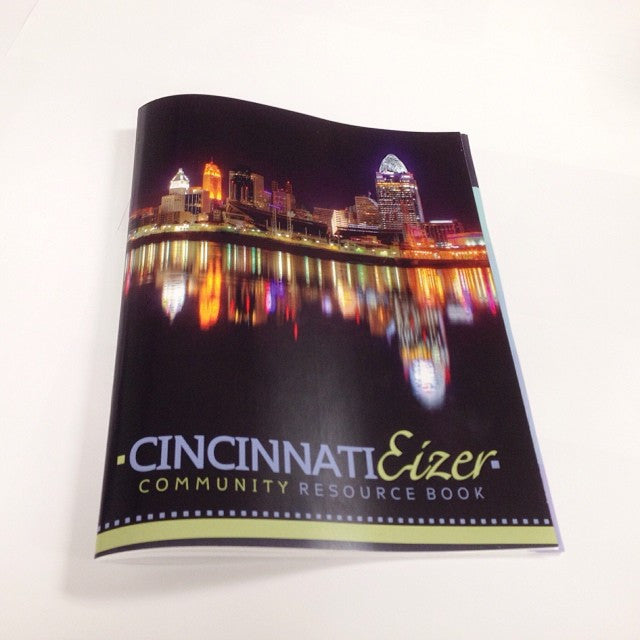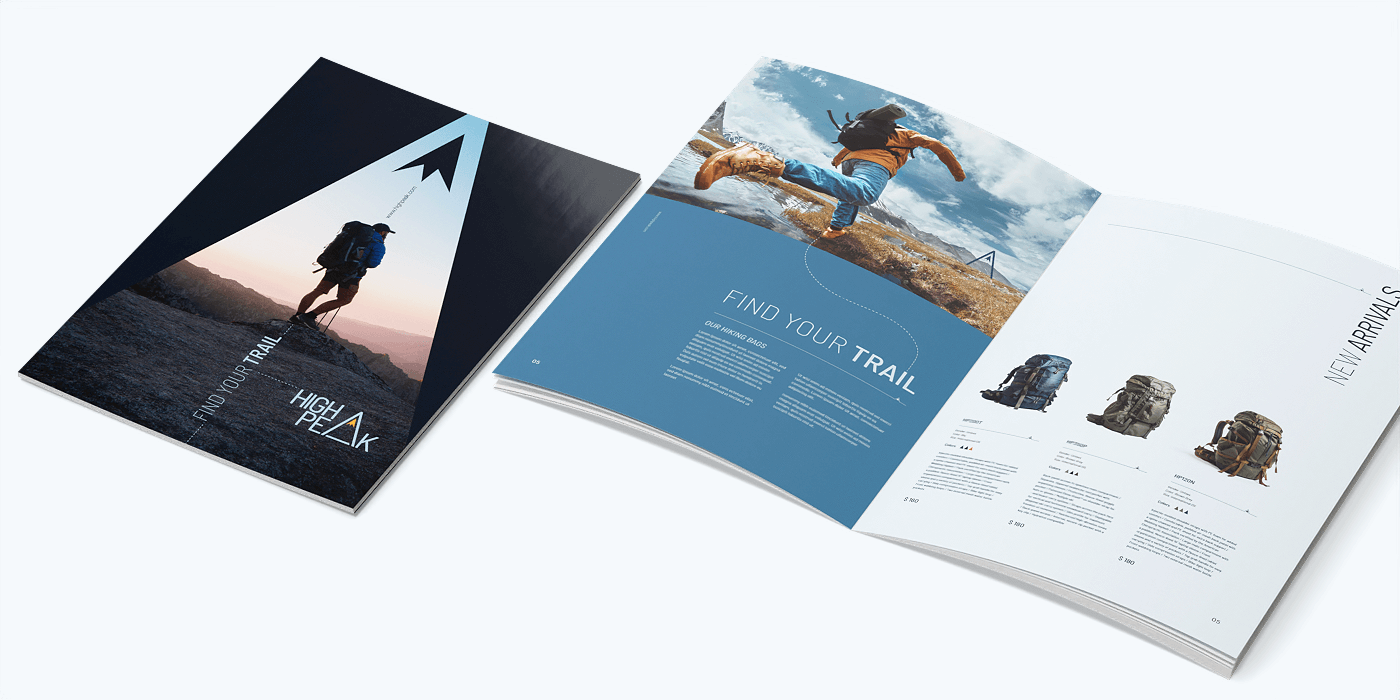How Booklet Printing Supports Omni-Channel Marketing Strategies
How Booklet Printing Supports Omni-Channel Marketing Strategies
Blog Article
The Important Guide to Recognizing Pamphlet Printing Options and Techniques
The process of booklet printing involves numerous factors to consider that can significantly impact the end product. From choosing the ideal style and size to understanding the subtleties of binding techniques, each choice plays an essential duty. Furthermore, elements such as paper supply and printing methods further affect the efficiency of the booklet. As one browses these choices, it comes to be critical to comprehend how they adjoin and what that indicates for the overall outcome.
Understanding Pamphlet Styles and Dimensions
When thinking about pamphlet printing, comprehending the numerous styles and dimensions available is crucial for accomplishing the wanted presentation. Brochures can be generated in various layouts, including saddle-stitched, spiral-bound, and perfect-bound, each offering distinctive benefits. Typical sizes vary from standard letter (8.5 x 11 inches) to smaller choices like A5 (5.8 x 8.3 inches), enabling adaptability based on material and target audience.Selecting the appropriate size can affect both the format and reader interaction. Bigger sizes may match aesthetically driven content, while smaller styles might be much more straightforward and portable. Furthermore, the variety of web pages affects the option of binding technique, as thicker pamphlets might require sturdier bindings. Eventually, recognizing these facets enables a more tailored method, making certain that the end product aligns with the intended message and aesthetic, boosting the total effectiveness of the communication.
Choosing the Right Paper Stock

Binding Approaches: Considerations and choices
When it pertains to binding approaches for booklets, several choices are readily available, each with distinct benefits. Saddle stitch binding offers a cost-effective remedy for thinner brochures, while excellent binding techniques give a more polished search for thicker magazines. Wire-O binding stands apart for its toughness and convenience of usage, making it ideal for files that require versatility.
Saddle Stitch Binding
Saddle stitch binding provides a functional and economical option for setting up pamphlets, making it a prominent option among publishers and organizations. This binding method involves folding sheets of paper in half and stapling them along the fold line, developing a orderly and neat appearance. Typically suitable for pamphlets with a reduced page count, saddle sewing is excellent for publications, pamphlets, and instructional products. The simpleness of this method permits fast manufacturing and is typically favored for promotional things or short runs. It is essential to note that saddle stitch binding might not be suitable for thicker booklets, as the spine may not hold up under increased weight. In general, it continues to be a dependable alternative for many printing tasks.
Perfect Binding Strategies
Perfect binding is a commonly utilized strategy that supplies a sleek and professional finish to magazines and brochures. This method entails gluing the web pages with each other at the spine utilizing a solid adhesive, enabling a clean side and the ability to hold a bigger variety of web pages contrasted to saddle stitching. Perfect binding is particularly appropriate for thicker booklets, such as catalogs and annual reports, where a strong, level back is wanted. Additionally, it provides the alternative for a printed cover that can be created to enhance visual allure. However, considerations such as web page matter, paper weight, and the intended use the brochure need to be taken into consideration, as they can impact longevity and total quality.
Wire-O Binding Alternatives
Wire-O binding, known for its resilience and versatility, uses an exceptional alternative for pamphlets that call for very easy web page transforming and a specialist look. This binding approach uses a collection of steel loopholes that hold pages safely, enabling them to lie flat when open. It is particularly suitable for handbooks, presentations, and brochures as a result of its durable nature. Wire-O binding is offered in various colors and sizes, fitting different page matters and thicknesses. Additionally, it allows the addition of covers and tabs, enhancing the pamphlet's general visual. Considerations for Wire-O binding include the selection of cable color, the dimension of the loopholes, and the extent of modification preferred, all of which can greatly affect the final item's look and functionality.
Digital vs. Offset Printing: Which Is Best for You?
When picking a printing technique for pamphlets, understanding the differences in between digital and balance out printing is vital. Digital printing makes use of modern-day innovation to produce high-quality prints promptly and economically, making it optimal for short runs or jobs requiring fast turnaround times. It enables customization, giving the ability to publish on-demand with minimal waste.In comparison, offset printing is a standard method that stands out in producing big amounts with consistent high quality. It involves transferring ink from a plate to a rubber covering, after that to the paper, which leads to precise details and vivid colors. Offset printing usually calls for longer setup times and is much more economical for bigger volumes.Ultimately, the selection in between electronic and offset printing depends on project demands, budget plan, and preferred amount. For tiny, time-sensitive tasks, electronic may be the most effective choice, while offset may be more suitable for larger, top notch manufacturings.

Designing Your Pamphlet: Tips and Ideal Practices
When creating a brochure, cautious attention to format, typeface choice, and shade use can substantially improve its efficiency. A well-structured design guides the reader's eye, while suitable fonts assure readability and communicate the desired tone. Additionally, reliable use of color can stimulate emotions and emphasize crucial information, making the total style much more impactful.
Picking the Right Design
How can one properly select the right format for a brochure? It is crucial to assess the pamphlet's function and target audience. A tidy, organized format enhances readability and involvement. Utilizing a grid system can assist in lining up elements constantly, creating an expert look. Additionally, including visual pecking order through varying dimensions and placements of pictures and message can guide the visitor's eye and stress essential details. It is also important to leave enough white room, which prevents overcrowding and permits for far better focus. Evaluating various formats through mock-ups can supply insight into exactly how the style does in real-world circumstances, ensuring that the last item fulfills both aesthetic and useful needs.
Selecting Suitable Font Styles
A well-chosen font style can considerably boost the total layout of a pamphlet, enhancing click for info the format and enhancing the web content's message. The option of font styles must think about readability, particularly for body message, as it ensures the info comes to all visitors. Sans-serif fonts are frequently chosen for digital layouts, while serif typefaces can offer a standard feel in printed materials. It's suggested to restrict font options to two or 3 to keep aesthetic coherence. Additionally, typeface dimension plays an essential role; headings need to be not frustrating however distinct, while body message must fit for reading. When picking font styles, alignment with the pamphlet's style and target audience is crucial for reliable communication and visual charm.
Effective Use Color
Shade serves as an effective tool in pamphlet design, forming perceptions and assisting reader feelings. It can evoke feelings of peace, excitement, or count on, relying on the hues selected. Designers need to consider color concept concepts, ensuring that the selected combination straightens with the pamphlet's message and target audience. Making use of cozy shades like red and orange can develop necessity, while cooler tones like blue and green foster tranquility.Additionally, contrast plays an important function; corresponding shades can improve readability and aesthetic charm. Consistency in color usage across pages even more enhances brand identity and cohesion. Ultimately, effective shade execution not just catches interest however likewise strengthens the booklet's purpose, making it an important aspect of successful design.
Ending Up Touches: Coatings and Unique Impacts
While numerous think about the content and layout of a pamphlet one of the most important aspects, the finishing touches, such as coverings and unique results, play a necessary function in enhancing its total charm. Coatings can offer protection and resilience, making sure that the brochure endures damage. Matte surfaces offer an innovative, non-reflective surface, while glossy layers can make shades appear even more dynamic and eye-catching. Special impacts, like embossing or foil marking, add a responsive dimension that can produce a memorable impression. These strategies can highlight details areas, attracting focus to essential details or producing aesthetic rate of interest. In addition, UV finish can provide a high-shine surface that elevates the general look.Together, these ending up touches not only boost the booklet's visual yet likewise connect professionalism and reliability and focus to detail, eventually leaving a lasting effect on the viewers.
Cost Considerations for Pamphlet Printing
Understanding the different price factors to consider for booklet printing is necessary for businesses and organizations aiming to enhance their budget plans. Trick factors influencing expenses consist of the selection of paper, binding, and ink techniques. Better products, such as premium paper or specialized inks, generally boost the total expenditure. In addition, the dimension and web page matter of the booklet play a significant role; larger booklets need more resources and time to produce.Another essential factor to consider is the printing strategy, whether electronic or countered, as each has its very own rates framework and viability for various amounts. Services need to additionally consider layout expenses, which can differ based on complexity and making use of expert services. Ultimately, shipping and handling fees can include in the overall, particularly for large orders. By reviewing these components, companies can make educated decisions that align with their financial capacities while attaining the preferred high quality in their printed materials.
Regularly Asked Concerns
What Are the Environmental Impacts of Brochure Printing?
The environmental influences of pamphlet printing include deforestation from paper manufacturing, carbon exhausts from transportation, and waste generation from discarded products - Booklet Printing. Lasting methods, such as using recycled paper and eco-friendly inks, can minimize these impacts
How Can I Ensure Shade Accuracy in My Pamphlet?
To ensure color precision in a brochure, one should make use of calibrated displays, utilize professional shade profiles, perform examination prints, and select high-grade printing services that offer shade matching and proofing options for ideal results.
What Is the Regular Turnaround Time for Pamphlet Printing?
The common turnaround time for brochure printing varies depending upon the complexity and quantity - Booklet Printing. Generally, it ranges from a couple of days to two weeks, affected by elements such as publishing methods and ending up requirements
Exist Minimum Order Quantities for Booklet Printing?

Can I Publish Pamphlets in Numerous Languages?
Publishing booklets in multiple languages is possible. Numerous printing services provide choices for multilingual or multilingual formats, permitting for reliable communication. Cautious preparation assurances that create components suit numerous languages without endangering readability or visual appeals. Additionally, elements such as paper stock and printing techniques more influence the effectiveness of the booklet. When considering booklet printing, understanding the various layouts and sizes available is essential for achieving the preferred discussion. When choosing a printing technique for booklets, understanding the distinctions in between digital and balance out printing web is important. Additionally, the dimension and web page count of the booklet play a substantial function; larger booklets call for more resources and time to produce.Another vital factor to consider is the printing method, whether electronic or countered, as each has its own pricing framework and suitability for various amounts. The environmental influences of brochure printing include logging from paper production, carbon exhausts from transport, and waste generation from discarded products.
Report this page